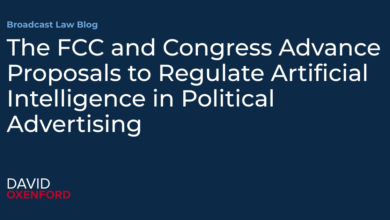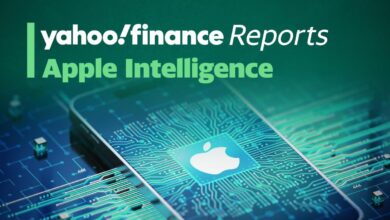Can Artificial Intelligence (AI) Maximize Your Social Security Benefit?

The answer of whether or not artificial intelligence (AI) can beef up your Social Security check isn’t as cut-and-dried as you might think.
In April, the average retired-worker beneficiary brought home $1,915.26 from Social Security, which works out to nearly $23,000 on an annualized basis. While this might not sound like much, Social Security plays a key role in forging a financial foundation during retirement for most Americans.
In each of the previous 22 years, national pollster Gallup has surveyed then-current retirees to gauge how reliant they are on their monthly Social Security check. These surveys have shown that no fewer than 80% of respondents in any given year rely on their payout, in some capacity, to cover their expenses.
It’s imperative that workers get as much as they can out of America’s leading retirement program to shore up their finances during their golden years.
Image source: Getty Images.
However, maximizing your Social Security payout can be a challenge. Without knowing our “departure date” ahead of time, there’s always going to be some degree of educated guesswork involved with our claim. The question is: Can artificial intelligence (AI) help minimize some of these unknowns in order maximize your Social Security benefit?
As you’re about to see, the answer isn’t as cut-and-dried as you might think.
These four parameters are used to calculate your Social Security check
Before digging into the specifics of what AI can bring to the table for retired workers, it’s important to understand how the Social Security Administration (SSA) calculates your monthly benefit.
Though certain aspects of Social Security can be confusing, the four parameters the SSA uses to calculate your Social Security check are easy to understand:
- Earnings history
- Work history
- Full retirement age
- Claiming age
The first two factors are tightly linked to one another. When determining your monthly payout, the SSA will account for your 35 highest-earning, inflation-adjusted years. In theory, if you earn a higher wage or salary during your lifetime (investment income doesn’t count), you should receive a beefier Social Security benefit during retirement. Just keep in mind that for every year less of 35 worked, the SSA will average a $0 into your calculation, which will adversely affect your payout.
The third component — full retirement age — represents the age you become eligible to receive 100% of your monthly payout. It’s entirely determined by your birth year, which for working Americans born in or after 1960 is age 67.
The final parameter, and the one that can swing the payout pendulum more than any other, is the age you decide to claim your retired-worker benefit. Even though retired-worker benefits can begin at age 62, the program strongly incentivizes patience. This “incentive” comes in the form of an up to 8% increase in benefits for every year a worker waits to claim their payout, beginning at age 62 and continuing through age 69, as shown in the table below.
| Birth Year | Age 62 | Age 63 | Age 64 | Age 65 | Age 66 | Age 67 | Age 68 | Age 69 | Age 70 |
| 1943-1954 | 75% | 80% | 86.7% | 93.3% | 100% | 108% | 116% | 124% | 132% |
| 1955 | 74.2% | 79.2% | 85.6% | 92.2% | 98.9% | 106.7% | 114.7% | 122.7% | 130.7% |
| 1956 | 73.3% | 78.3% | 84.4% | 91.1% | 97.8% | 105.3% | 113.3% | 121.3% | 129.3% |
| 1957 | 72.5% | 77.5% | 83.3% | 90% | 96.7% | 104% | 112% | 120% | 128% |
| 1958 | 71.7% | 76.7% | 82.2% | 88.9% | 95.6% | 102.7% | 110.7% | 118.7% | 126.7% |
| 1959 | 70.8% | 75.8% | 81.1% | 87.8% | 94.4% | 101.3% | 109.3% | 117.3% | 125.3% |
| 1960 or later | 70% | 75% | 80% | 86.7% | 93.3% | 100% | 108% | 116% | 124% |
Source: Social Security Administration.
Here’s how artificial intelligence can assist with your Social Security claiming decision
Artificial intelligence, which involves the use of software and systems in place of humans, is still evolving. No one is entirely certain of the full extent to which AI can improve our lives. However, the SSA is certainly looking at ways to deploy to this technology.
For example, AI chatbots have taken the world by storm. The most famous of these chatbots is ChatGPT, which can interact with users and provide answers to their queries. The SSA may consider deploying virtual SSA agents (i.e., AI chatbots) to answer common questions current and future beneficiaries may have.
AI solutions are also typically adept at finding publicly available information and data. This may be where AI can provide the greatest assistance to future retirees looking to maximize their Social Security benefit.
For instance, AI virtual agents can rapidly reference an exhaustive study conducted by researchers at United Income (“The Retirement Solution Hiding in Plain Sight”) that analyzed the claiming decisions of 20,000 retired workers using data from the University of Michigan’s Health and Retirement Study. These researchers extrapolated the claims of these 20,000 workers to determine if they’d made an “optimal” decision that maximized what they received from the program.
Not surprisingly, the report found that only 4% of the 20,000 workers studied optimized their claim. This isn’t unexpected given that none of us knows our date of passing ahead of time.
But what United Income’s analysis did show is a marked inversion between actual claims and optimal claims. Whereas 79% of actual retired-worker claims were made from ages 62 through 64, just 8% of optimal claims were found within this age range. By comparison, 57% of claimants would have generated the highest lifetime income had they chosen to begin receiving their Social Security check at age 70.
AI chatbots and virtual agents can absolutely provide compelling historical data that future retirees can lean on to make a more informed claiming decision.
Image source: Getty Images.
AI has limitations, which means the ultimate Social Security claiming decision is yours
However, artificial intelligence has its undeniable limitations.
While AI is pretty good at scouring the web for statistical studies, it’s unable to factor in that every person has a unique set of circumstances that they need to account for when deciding which age is best to take their Social Security retired-worker benefit.
As an example, no one knows how you’re feeling better than you. Personal health is one of the most-important factors to consider when deciding which age is likeliest to maximize your lifetime benefit from Social Security.
Though United Income’s study showed that waiting was beneficial for a majority of the retirees it examined, this may not be a viable choice for someone with one of more chronic health conditions that could shorten their life expectancy. Even though an early claim leads to a permanently reduced monthly benefit, it could result in the highest possible lifetime payout for someone with a shorter life expectancy.
Marital status is another aspect of Social Security that AI may not firmly grasp. While AI chatbots could easily give you statistics on what the average couple is bringing home monthly, as well as list which states might tax a portion of your Social Security benefit, AI is probably going to ignore the dynamics of financial needs within a relationship.
For instance, it might make all the sense in the world for a lower-earning spouse to claim their benefit well before full retirement age to generate income for their household. Though this move would make little or no sense to AI models, it makes perfect sense in that it allows the higher-earning spouse’s benefit to grow over time. This should provide a larger monetary benefit for the couple over time.
Although artificial intelligence can be a handy tool that can aid in the decision-making process, there’s no Social Security claims substitute for humans analyzing their own unique situation.



